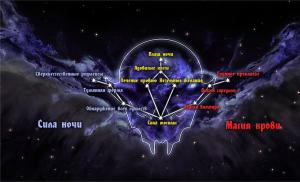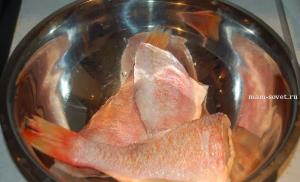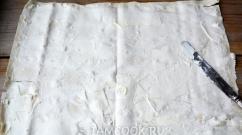Image quality. Microscope resolution and magnification How to determine the magnification and resolution of a microscope
Methodical instructions
To study objects of small size and indistinguishable with the naked eye, use special optical instruments - microscopes. Depending on the purpose, they are distinguished: simplified, working, research and universal. According to the light source used, microscopes are divided into: light, luminescent, ultraviolet, electronic, neutron, scanning, tunnel. The design of any of the listed microscopes includes mechanical and optical parts. The mechanical part is used to create observation conditions - to place the object, focus the image, the optical part - to obtain an enlarged image.
Light microscope device
A microscope is called a light microscope because it provides the ability to study an object in transmitted light in a bright field of view. The general view of the Biomed-2 microscope is shown in (Fig. External view of Biomed 2).
|
|
The mechanical part of the microscope consists of a microscope base, a movable stage and a revolving device.
Focusing on the object is carried out by moving the stage by rotating the coarse and fine adjustment knobs.
The coarse focusing range of the microscope is 40 mm.
The condenser is mounted on a bracket and is positioned between the stage and the collector lens. Its movement is made by turning the condenser height adjustment knob. Its general view is shown in (Fig. ???) A two-lens condenser with an aperture of 1.25 provides illumination of the fields on the object when working with lenses with magnification from 4 to 100 times.
The subject table is mounted on a bracket. Coordinate movement of the stage, possibly by rotating the handles. The object is attached to the table by the specimen holders. The holders can be moved relative to each other.
The coordinates of the object and the amount of movement are measured on scales with a graduation of 1 mm and vernier with a graduation of 0.1 mm. The range of movement of the object in the longitudinal direction is 60 mm, in the transverse direction - 40 mm. Condenser

Condenser
The microscope is equipped with a condenser attachment unit with the possibility of centering and focusing movements.
A universal condenser installed in a holder is used as a base in the microscope; when using immersion oil, the numerical aperture is 1.25.
When adjusting the illumination, a smooth change in the numerical aperture of the beam of rays illuminating the preparation is carried out using an aperture diaphragm.
The condenser is installed in the condenser holder in a fixed position and secured with a locking screw.
Condenser centering screws are used during the illumination adjustment process to move the condenser in a plane perpendicular to the optical axis of the microscope while centering the image of the field diaphragm relative to the edges of the field of view.
The up and down condenser handle, located on the left side of the condenser holder bracket, is used when adjusting the lighting to focus on the image of the field diaphragm.
The filters are installed in a rotating ring located at the bottom of the condenser.
Optical part of the microscope
Consists of lighting and observation systems. The lighting system evenly illuminates the field of view. The observation system is designed to enlarge the image of the observed object.
Lighting system
Located under the stage. It consists of a collector lens installed in a housing, which is screwed into the opening of the microscope base and a cartridge with a lamp installed in it. The lamp holder is installed inside the microscope base. The microscope illuminator is powered from the AC mains through a three-pin power cord, which is connected with a plug to the mains. The illumination lamp is switched on by a switch located at the base of the microscope.
Observing system
Consists of objectives, monocular attachment and eyepieces.
Lenses
Objectives are the most important, most valuable and fragile part of a microscope. Magnification, resolution and image quality depend on them. They are a system of mutually centered lenses enclosed in a metal frame. There is a thread on the upper end of the barrel, by means of which the lens is attached to the socket of the revolver. The front (closest to the object) lens in the lens is called the frontal lens, the only one in the lens that produces magnification. All other objective lenses are called correction lenses and are used to eliminate the imperfections of the optical image.
When a beam of light rays with different wavelengths passes through the lenses, a rainbow coloration of the image occurs - chromatic aberration. Unequal refraction of rays on a curved lens surface leads to spherical aberration resulting from uneven refraction of the central and peripheral rays. As a result, the dot image appears as a blurred circle.
Objectives included in the microscope set are designed for optical tube length 160 mm, height 45 mm and cover glass thickness mm.
Objectives with a magnification of more than 10X are equipped with spring-loaded frames that protect the specimen and the front lenses of the objectives from damage when focusing on the surface of the specimen.
A colored ring can be applied to the lens barrel in accordance with the magnification, as well as:
- numerical aperture;
- optical length of the tube 160;
- cover glass thickness 0.17, 0 or - ";
- type of immersion - oil OIL (MI) or water VI;
Objectives marked with 0.17 are designed to study specimens with only 0.17 mm cover slips. Objectives marked with 0 are designed for examining specimens without cover slips only. Objectives of low magnification (2.5 - 10), as well as immersion objectives can be used in the study of preparations both with a cover slip and without a cover slip. These lenses are marked with a -.
Eyepieces
The microscope eyepiece consists of two lenses: an eye (upper) and a collective (lower). There is a diaphragm between the lenses. The diaphragm delays the side beams and transmits those close to the optical axis, which enhances the contrast of the image. The purpose of the eyepiece is to magnify the image provided by the lens. The eyepieces have their own magnification of x5, x10, x12.5, x16 and x20 as indicated on the rim.
The choice of eyepieces depends on the set of lenses used. When working with objectives with achromats, achrostigmata and achrofluars, it is advisable to use eyepieces with a linear field of view of no more than 20 mm, with planachromats and planapochromats - eyepieces with a linear field of view of 20; 22 and 26.5 mm.
Additionally, the microscope can be completed with an eyepiece WF10 / 22 with a scale; scale division value 0.1 mm.
Microscopes characteristics
Microscope magnification
The main characteristics of a microscope are magnification and resolution. The total magnification that a microscope gives is defined as the product of the objective magnification times the eyepiece magnification. However, magnification does not represent the quality of the image; it can be clear and fuzzy. The clarity of the resulting image is characterized by the resolution of the microscope, i.e. the smallest size of objects or their details that can be seen with this device.
The total magnification G of the microscope during visual observation is determined by the formula: G = βok × βok, where:
βob - lens magnification (marked on the lens); βok - eyepiece magnification (marked on the eyepiece).
The diameter of the field observed in the object, Dob mm, is determined by the formula: Dock = Dock × βob. Dock - the diameter of the ocular field of view (marked on the eyepiece) mm. The calculated values of the magnification of the microscope and the diameter of the observed field on the object are shown in Table 3.
| Lens magnification | Microscope magnification and observed field at an object with an eyepiece: |
|||||
|---|---|---|---|---|---|---|
| 5/26* | 10/22 | 15/16* | ||||
| G | Dob, mm | G | Dob, mm | G | Dob, mm | |
| 4 | 20 | 4,0 | 50 | 4,5 | 64 | 3,75 |
| 10 | 50 | 2,0 | 100 | 1,8 | 160 | 1,5 |
| 20 | 100 | 1,0 | 200 | 0,9 | 320 | 0,75 |
| 40 | 200 | 0,5 | 420 | 0,45 | 640 | 0,38 |
| 100 | 500 | 0,2 | 1000 | 0,18 | 1600 | 0,15 |
- By additional order
Microscope resolution
The resolution of the microscope is determined by the minimum (resolution) distance between two points (or two thinnest strokes), visible separately, and is calculated by the formula
D = λ / (A1 + A2), where d is the minimum (permissive) distance between two points (strokes); λ is the wavelength of the used light; A1 and A2 are the numerical apertures of the lens (indicated on the barrel) and the condenser.
You can increase the resolution (i.e., decrease the absolute value of d, since these are reciprocal values) in the following ways: illuminate the object with light with a shorter wavelength λ (for example, ultraviolet or short wavelengths), use lenses with a larger A1 aperture, or increase the aperture condenser A2.
Lens working distance
The microscopes are equipped with four detachable objectives with intrinsic magnifications of 4 ×, 10 ×, 40 × and 100 ×, indicated on a metal mount. The lens magnification depends on the curvature of the main front lens: the greater the curvature, the shorter the focal length and the greater the magnification. This must be remembered during microscopy - the greater the magnification of the objective, the shorter the free working distance and the lower it should be lowered over the plane of the specimen.
Immersion
All lenses are divided into dry and immersion, or submersible. Dry is a lens that has air between its front lens and the drug in question. In this case, due to the difference in the refractive index of glass (1.52) and air (1.0), part of the light rays is deflected and does not enter the eye of the observer. Dry system lenses are usually long focal lengths and give low (10 ×) or medium (40 ×) magnifications.
Immersion, or submersible, are called such objectives, between the front lens of which and the drug is placed a liquid medium with a refractive index close to the refractive index of glass. Cedar nut oil is usually used as an immersion medium. You can also use water, glycerin, transparent oils, monobromnaphthalene, etc. In this case, a homogeneous (homogeneous) medium (drug glass - oil - objective glass) with the same refractive index is established between the frontal objective lens and the preparation. Due to this, all rays, without refraction and without changing direction, fall into the lens, creating the conditions for the best illumination of the drug. The value (n) of the refractive index is 1.33 for water, 1.515 for cedar oil, and 1.6 for monobromonaphthalene.
Microscopic technique
The microscope is connected to the electrical network using a power cable. With the help of a revolver, a lens with a magnification of × 10 is installed in the course of the rays. A slight stop and the click of the revolver spring indicate that the lens is mounted on the optical axis. Use the coarse focusing knob to lower the lens at a distance of 0.5 - 1.0 cm from the stage.
Rules for working with dry lenses.
The prepared preparation is placed on a stage and secured with a clamp. Using a dry lens with a magnification of × 10, several fields of view are viewed. Move the stage with the side screws. The area of the preparation required for the study is set in the center of the field of view. Raise the tube and rotate the revolver to move the lens with a magnification of × 40, observing from the side, again lower the tube with the lens with the macrometric screw until it almost touches the preparation. Look through the eyepiece, very slowly raise the tube until the contours of the image appear. Precise focusing is carried out using a micrometric screw, rotating it in one direction or the other, but not more than one full turn. If resistance is felt during the rotation of the micrometer screw, it means that its stroke has been passed to the end. In this case, turn the screw one or two full turns in the opposite direction, again find the image using the macrometric screw and proceed to work with the micrometric screw.
It is useful to train yourself to keep both eyes open during microscopy and use them alternately, as this will result in less eye fatigue.
When changing lenses, remember that the resolution of the microscope depends on the ratio of the lens aperture to the condenser. The numerical aperture of a lens with a magnification of × 40 is 0.65, that of a non-immersed condenser is 0.95. It is practically possible to bring them into compliance with the following technique: after focusing the preparation with the objective, remove the eyepiece and, looking into the tube, cover the iris diaphragm of the condenser until its edges become visible at the border of the uniformly illuminated rear objective lens. At this point, the numerical apertures of the condenser and the lens will be approximately equal.
Rules for working with an immersion lens.
A small drop of immersion oil is applied to the preparation (preferably fixed and colored). The revolver is turned and an immersion objective with a magnification of 100 × is installed along the central optical axis. The condenser is lifted up to the stop. The iris diaphragm of the condenser is fully opened. Looking from the side, the tube is lowered with a macrometric screw until the objective is immersed in oil, almost until the lens touches the specimen slide. This must be done very carefully so that the front lens does not move or get damaged. They look through the eyepiece, very slowly rotate the macrometric screw towards themselves and, without removing the lens from the oil, raise the tube until the contours of the object appear. It should be remembered that the free working distance in the immersion lens is 0.1 - 0.15 mm. Then, precise focusing is performed with a macroscopic screw. Several visual fields are examined in the preparation, moving the table with lateral screws. At the end of work with the immersion lens, raise the tube, remove the preparation and carefully wipe the front lens of the objective, first with a dry soft cotton cloth, then with the same cloth, but slightly moistened with pure gasoline. Do not leave oil on the surface of the lens, as it tends to accumulate dust and can damage the microscope optics over time. The drug is freed from oil first with a piece of filter paper, then the glass is treated with gasoline or xylene.
Light microscopy
Light microscopy provides an increase of up to 2-3 thousand times, a color and moving image of a living object, the possibility of microcinema and long-term observation of the same object, an assessment of its dynamics and chemistry.
The main characteristics of any microscope are resolution and contrast. Resolution is the minimum distance at which two points are displayed separately by the microscope. The human eye has a resolution of 0.2 mm for best vision.
Image contrast is the difference between the brightness of the image and the background. If this difference is less than 3 - 4%, then it is impossible to catch it either with the eye or with a photographic plate; then the image will remain invisible, even if the microscope resolves its details. Contrast is influenced both by the properties of the object, which change the luminous flux compared to the background, and by the ability of the optics to pick up the resulting differences in the properties of the beam.
The capabilities of a light microscope are limited by the wave nature of light. The physical properties of light - color (wavelength), brightness (wave amplitude), phase, density and direction of wave propagation change depending on the properties of the object. These differences are used in modern microscopes to create contrast.
Microscope magnification is defined as the product of the objective magnification times the eyepiece magnification. Typical research microscopes have an eyepiece magnification of 10, and an objective magnification of 10, 45 and 100. Accordingly, the magnification of such a microscope ranges from 100 to 1000. Some of the microscopes have magnifications of up to 2000. An even higher magnification does not make sense, since this the resolution does not improve. On the contrary, the image quality deteriorates.
Numerical aperture is used to express the resolution of an optical system or the aperture of a lens. Lens Aperture - The intensity of light per unit area of the image is approximately equal to the square of NA. The NA is about 0.95 for a good lens. The microscope is usually sized to have a total magnification of about 1000 NA. If a liquid (oil or, more rarely, distilled water) is introduced between the objective and the sample, you will get an "immersion" objective with an NA value reaching 1.4, and with a corresponding improvement in resolution.
Light microscopy methods
Light microscopy methods (illumination and observation). Microscopy methods are selected (and provided constructively) depending on the nature and properties of the objects under study, since the latter, as noted above, affect the image contrast.
Brightfield method and its varieties
The bright field method in transmitted light is used to study transparent preparations with absorbing (light-absorbing) particles and parts included in them. This can be, for example, thin colored sections of animal and plant tissues, thin sections of minerals, etc. In the absence of a preparation, a beam of light from the condenser, passing through the objective, gives a uniformly illuminated field near the focal plane of the eyepiece. In the presence of an absorbing element in the preparation, the light incident on it is partially absorbed and partially scattered, which causes the appearance of the image. The method can also be used when observing non-absorbent objects, but only if they scatter the illuminating beam so strongly that a significant part of it does not fall into the lens.
The oblique lighting method is a variation on the previous method. The difference between them is that the light is directed to the object at a large angle to the direction of observation. Sometimes it helps to reveal the "relief" of the object due to the formation of shadows.
Reflected light brightfield is used to investigate opaque objects that reflect light, such as metal or ore sections. Illumination of the preparation (from an illuminator and a semitransparent mirror) is performed from above, through the lens, which simultaneously plays the role of a condenser. In the image created in the plane by the objective together with the tube lens, the structure of the preparation is visible due to the difference in the reflectivity of its elements; in the bright field, inhomogeneities are also distinguished, scattering the light incident on them.
The dark field method and its varieties
Dark-field microscopy is used to produce images of transparent, non-absorbent objects that cannot be seen with the brightfield technique. These are often biological objects. The light from the illuminator and the mirror is directed to the preparation by a special condenser - the so-called. dark field condenser. Upon exiting the condenser, the main part of the light rays, which did not change their direction when passing through the transparent preparation, forms a beam in the form of a hollow cone and does not enter the lens (which is located inside this cone). The image in the microscope is formed with the help of only a small part of the rays scattered by microparticles of the preparation on the slide inside the cone and passed through the objective. Dark-field microscopy is based on the Tyndall effect, a famous example of which is the detection of dust particles in air when illuminated with a narrow beam of sunlight. In the field of view, against a dark background, light images of the structural elements of the preparation, which differ from the environment in refractive index, are visible. For large particles, only light edges are visible, scattering light rays. Using this method, it is impossible to determine by the type of image whether particles are transparent or opaque, they have a higher or lower refractive index compared to the environment.
Conducting a dark field study
Slides should be no thicker than 1.1-1.2 mm, cover slides 0.17 mm, no scratches or dirt. When preparing the drug, the presence of bubbles and large particles should be avoided (these defects will be visible brightly glowing and will not allow observing the drug). For dark-field, more powerful illuminators and the maximum incandescence of the lamp are used.
Darkfield lighting setup is basically as follows:
Set the light over Koehler;
Replace the bright-field condenser with a dark-field one;
Immersion oil or distilled water is applied to the upper lens of the condenser;
Raise the condenser until it touches the bottom surface of the slide;
A low magnification lens focuses on the specimen;
With the help of centering screws, a bright spot (sometimes having a darkened central area) is transferred to the center of the field of view;
Raising and lowering the condenser, they achieve the disappearance of the darkened central area and obtain an evenly illuminated bright spot.
If this cannot be done, then it is necessary to check the thickness of the glass slide (usually this phenomenon is observed when using too thick glass slides - the cone of light is focused in the thickness of the glass).
After the correct setting of the light, the objective of the required magnification is installed and the preparation is examined.
The method of ultramicroscopy is based on the same principle - preparations in ultramicroscopes are illuminated perpendicular to the direction of observation. With this method, it is possible to detect (but not "observe" in the literal sense of the word) extremely small particles, the sizes of which lie far beyond the resolution of the most powerful microscopes. With the help of immersion ultramicroscopes, it is possible to register the presence of particles in a preparation with particles up to 2 × 10 in -9 degrees m. But the shape and exact dimensions of such particles cannot be determined using this method. Their images are presented to the observer in the form of diffraction spots, the sizes of which do not depend on the size and shape of the particles themselves, but on the objective aperture and the magnification of the microscope. Since these particles scatter very little light, they require extremely strong light sources, such as a carbon arc, to illuminate them. Ultramicroscopes are mainly used in colloidal chemistry.
Phase contrast method
The phase contrast method and its variety - the so-called. method of "anoptral" contrast are intended for obtaining images of transparent and colorless objects, invisible when observed by the bright field method. These include, for example, live, unpainted animal tissue. The essence of the method is that even with very small differences in the refractive indices of different elements of the preparation, the light wave passing through them undergoes different changes in phase (acquires the so-called phase relief). Not perceived directly by either the eye or the photographic plate, these phase changes with the help of a special optical device are converted into changes in the amplitude of the light wave, that is, in changes in brightness ("amplitude relief"), which are already distinguishable by the eye or are fixed on the photosensitive layer. In other words, in the resulting visible image, the distribution of brightness (amplitudes) reproduces the phase relief. The resulting image is called phase contrast.
The phase contrast device can be installed on any light microscope and consists of:
A set of objectives with special phase plates;
Swing disc condenser. It has annular diaphragms corresponding to the phase plates in each of the objectives;
Auxiliary telescope for adjusting phase contrast.
Phase contrast adjustment is as follows:
Replace the objectives and the microscope condenser with phase objectives (designated by the letters Ph);
Install a low magnification lens. The hole in the condenser disc must be without an annular diaphragm (marked with the number "0");
Tune the light according to Koehler;
Choose a phase lens of appropriate magnification and focus it on the specimen;
Rotate the condenser disk and install the annular diaphragm corresponding to the lens;
Increase A microscope is defined as the product of the objective magnification times the eyepiece magnification. Typical research microscopes have an eyepiece magnification of 10, and an objective magnification of 10, 45 and 100. Accordingly, the magnification of such a microscope ranges from 100 to 1000. Some of the microscopes have magnifications of up to 2000. An even higher magnification does not make sense, since this the resolution does not improve. On the contrary, the image quality deteriorates.
Microscope Magnification Formula
Image quality is determined resolution of the microscope, i.e. the minimum distance at which the microscope optics can distinguish two closely spaced points separately. the resolution depends on the numerical aperture of the objective, the condenser and the wavelength of the light that illuminates the preparation. Numerical aperture (opening) depends on the angular aperture and refractive index of the medium located between the front lens of the objective and condenser and the drug.
In addition to the resolution of the system, the numerical aperture characterizes the lens aperture: the light intensity per unit image area is approximately equal to the square of NA. The NA is about 0.95 for a good lens. The microscope is usually sized to have a total magnification of about 1000 NA.
Resolution limit- the smallest dist. Between two closely spaced points of an object that can be smoothed through a microscope (perceived as two points).
Aperture (Latin apertura - hole) in optics is a characteristic of an optical device that describes its ability to collect light and resist diffraction blurring of image details. Depending on the type of optical system, this characteristic can be linear or angular. As a rule, among the details of an optical device, the so-called aperture diaphragm is specially distinguished, which most of all limits the diameters of the light beams passing through the optical instrument. Often, the role of such an aperture diaphragm is played by a frame or, simply, the edges of one of the optical elements (lenses, mirrors, prisms).
Angular aperture - the angle between the extreme beams of the conical light beam at the entrance (exit) of the optical system.
Numerical Aperture - is equal to the product of the refractive index of the medium between the object and the lens by the sine of the aperture angle. It is this value that most fully determines at the same time the luminosity, the resolution of the microscope objective. To increase the numerical aperture of objectives in microscopy, the space between the objective and the cover glass is filled with an immersion liquid.
Corner The lens aperture is the maximum angle (AOB) at which rays passing through the specimen can enter the lens. Numerical aperture objective is equal to the product of the sine of half the angular aperture and the refractive index of the medium located between the slide and the front lens of the objective. N.A. = n sinα where, N.A. - numerical aperture; n is the refractive index of the medium between the preparation and the lens; sinα is the sine of the angle α equal to half of the angle AOB in the diagram.
Thus, the aperture of dry systems (between the frontal lens of the objective and the drug-air) cannot be more than 1 (usually not more than 0.95). The medium placed between the drug and the lens is called immersion liquid or immersion, and a lens designed to work with immersion liquid is called immersion. By immersion with a higher refractive index than air, it is possible to increase the numerical aperture of the objective lens and hence the resolution.
Numerical aperture lenses are always engraved on their frames.
The resolution of the microscope also depends on the condenser aperture. If we consider the condenser aperture equal to the lens aperture, then the resolution formula has the form R = λ / 2NA, where R is the resolution limit; λ is the wavelength; N.A is the numerical aperture. It can be seen from this formula that when observed in visible light (green part of the spectrum - λ = 550nm), the resolution (resolution limit) of the microscope cannot be> 0.2μm
Immersion (from Latin immersio - immersion) - a liquid that fills the space between the object of observation and a special immersion objective (condenser and microscope slide). Three types of immersion fluids are mainly used: oil immersion (MI / Oil), water immersion (VI / W) and glycerol immersion (GI / Glyc), the latter being mainly used in ultraviolet microscopy.
Immersion is used in cases when it is required to increase the resolution of the microscope or its application requires the technological process of microscopy. This happens:
1. increasing visibility by increasing the difference between the refractive index of the medium and the object;
2. an increase in the depth of the viewed layer, which depends on the refractive index of the medium.
In addition, the immersion fluid can reduce the amount of stray light by eliminating glare from an object. This eliminates the inevitable loss of light when it enters the lens.
Refraction of light - a change in the direction of light rays in a medium with a refractive index n changing in space. Usually, the term “R. With." use when describing the distribution of optical. radiation in inhomogeneous media with smoothly varying n from point to point (the trajectories of light rays in such media are smoothly curved lines). A sharp change in the direction of the rays at the interface between two homogeneous media with different n is usually called. refraction of light. Atm. optics, spectacle optics traditionally use the term "refraction". Since the atmosphere is an inhomogeneous medium, then, as a result of R. s. there is a shift in the apparent position of the celestial bodies relative to the true one, which must be taken into account in astronomy. R. s. in the atmosphere should be taken into account when geodetic. measurements. R. s. is the cause of mirages. R.'s phenomenon with. allows you to visualize optical. inhomogeneities in solid, liquid and gaseous media.
Refractometer and I ( from lat. refractus - refracted and Greek. metreo - I measure) is a method for studying substances based on the determination of the index (coefficient) of refraction (refraction) and some of its functions. Refractometry (refractometric method) is used to identify chemical compounds, quantitative and structural analysis, to determine the physicochemical parameters of substances.
The refractive index, n, is the ratio of the speeds of light in adjoining media. For liquids and solids, n is usually determined relative to air, and for gases - relative to vacuum. The values of n depend on the wavelength l of the light and the temperature, which are indicated in subscripts and superscripts, respectively. Refractometry methods are divided into two large groups: objective and subjective. Despite the undeniable advantage of objective methods, each objective study, as a rule, ends with subjective adjustments. Objective methods. There are two subgroups of objective refractometry methods:
1. Objective in relation to the patient and subjective in relation to the doctor. An example is skiascopy, the objective data of which can be obtained through the physician's subjective assessment of the skiascopic reflex of the subject. 2. Objective in relation to both the investigator and the investigator, realized with the help of a refractometric automaton.
Light polarization- physical optical characteristic radiation, describing the transverse anisotropy of light waves, i.e., the nonequivalence of dec. directions in a plane perpendicular to the light beam. Creatures. value for P.'s understanding of the page. had its manifestation in effects light interference and, in particular, the fact that two light beams with mutually perpendicular polarization planes do not directly interfere. P. s. found naturals. explanation in e-magn. the theory of light, developed in 1865-73 by J.C. Maxwell, later in quantum electrodynamics.
The term polarization of waves was introduced by Malus in relation to transverse mechanical waves
For receiving polarized light and its detection there are special physical devices, called in the first case polarizers, and in the second, analyzers. They usually work in the same way. There are several ways to obtain and analyze polarized light.
1. Polarization using polaroids. Polaroids are celluloid films coated with the thinnest layer of crystals of nodquinine sulfate. The use of polaroids is currently the most widespread method of polarizing light.
2. Polarization by reflection. If a natural ray of light strikes a black polished surface, the reflected ray is partially polarized. As a polarizer and analyzer can be used mirror or fairly well polished ordinary window glass, blackened on one side with asphalt varnish. The degree of polarization is the greater, the more correct the angle of incidence is maintained. For glass, the angle of incidence is 57 °.
3. Polarization by means of rejection. The light beam is polarized not only upon reflection, but also upon
refraction. In this case, a stack is used as a polarizer and analyzer.
stacked together 10-15 thin glass plates, located to the incident light rays at an angle of 57 °.
Prism nicolas (abbr. nicole) is a polarizing device based on the effects of birefringence and total internal reflection. Nicolas prism consists of two identical triangular prisms made of Icelandic spar, glued together with a thin layer of Canadian balsam. The prisms are milled so that the end face is beveled at an angle of 68 ° with respect to the direction of the transmitted light, and the sides to be glued make a right angle with the ends. In this case, the optical axis of the crystal ( AB) is at an angle of 64 ° with the direction of the light.
The full polarization aperture of the prism is 29 °. A feature of the prism is the change in the direction of the outgoing beam when the prism rotates, due to the refraction of the beveled ends of the prism. The prism cannot be used to polarize ultraviolet light, since Canadian balsam absorbs ultraviolet light. Light with arbitrary polarization, passing through the end of the prism, experiences birefringence, splitting into two rays - an ordinary one with a horizontal plane of polarization ( AO) and extraordinary, with a vertical plane of polarization ( AE). After that, the ordinary ray undergoes total internal reflection on the bonding plane and exits through the side surface. The extraordinary comes out unhindered through the opposite end of the prism.
Brewster's law - the law of optics, which expresses the relationship between the refractive index and the angle at which the light reflected from the interface will be completely polarized in the plane perpendicular to the plane of incidence, and the refracted beam is partially polarized in the plane of incidence, and the polarization of the refracted ray reaches its highest value. It is easy to establish that in this case the reflected and refracted rays are mutually perpendicular. The corresponding angle is called Brewster's corner.
This optical phenomenon is named for the Scottish physicist David Brewster, who discovered it in 1815.
Brewster's law : , where n 12 - refractive index of the second medium relative to the first, θ Br- angle of incidence (Brewster angle).
When reflected from one plate at the Brewster angle, the intensity of linearly polarized light is very low (about 4% of the incident beam intensity). Therefore, in order to increase the intensity of the reflected light (or to polarize the light transmitted into the glass in a plane parallel to the plane of incidence), several bonded plates are used, folded into a stack - Stoletov's foot. It is easy to trace what is happening in the drawing. Let a ray of light fall on the top of your foot. The first plate will reflect a fully polarized beam (about 4% of the original intensity), the second plate will also reflect a fully polarized beam (about 3.75% of the original intensity), and so on. In this case, the beam emerging from the bottom of the foot will increasingly polarize in a plane parallel to the plane of incidence as the plates are added. full refraction is essential for radio communications: most whip antennas emit vertically polarized waves. Thus, if a wave hits the interface (land, water, or ionosphere) at the Brewster angle, there will be no reflected wave, and there will be no channel, respectively.
Malus law - the dependence of the intensity of linearly polarized light after its passage through the polarizer on the angle between the polarization planes of the incident light and the polarizer, where I 0 - the intensity of the light incident on the polarizer, I- the intensity of the light coming out of the polarizer. Light with a different (not linear) polarization can be represented as the sum of two linearly polarized components, to each of which the Malus law is applicable. According to Malus's law, the intensity of transmitted light is calculated in all polarizing devices, for example, in polarizing photometers and spectrophotometers. Reflection losses, which depend on and are not taken into account by the Malus law, are determined additionally.
Optically active substances , environments with natural optical activity... O.-a. v. are subdivided into 2 types. Those belonging to the 1st of them are optically active in any state of aggregation (sugars, camphor, tartaric acid), to the 2nd, they are active only in the crystalline phase (quartz, cinnabar). In substances of the 1st type, the optical activity is due to the asymmetric structure of their molecules, the 2nd type - the specific orientation of the molecules (ions) in the unit cells of the crystal (the asymmetry of the field of forces that bind particles in the crystal lattice). Crystals O.-a. v. always exist in two forms - right and left; in this case, the lattice of the right-hand crystal is mirror-symmetric to the lattice of the left one and cannot be spatially aligned with it (the so-called enantiomorphic forms, see Fig. Enantiomorphism). Optical activity of the right and left forms of O. - a. v. Type 2 crystals have different signs (and are equal in absolute value under the same external conditions); therefore, they are called optical antipodes (sometimes this is also the name of type 1 crystals ).
Rotation of the plane of polarization light - united by a common phenomenological. manifestation of a group of effects consisting in turning polarization plane transverse waves as a result of interaction with an anisotropic medium. Naib. the effects associated with V.p. are well-known. light, although similar phenomena are observed in other areas of the spectrum e-magn. waves (in particular, in the microwave range), as well as in acoustics, physics of elementary particles, etc. p.p. is usually due to the difference in coeff. refraction of the medium for two circularly polarized (in the right and left circles) waves (the so-called circular anisotropy) and is described in the general case by a second-rank axial tensor connecting the axial vector of the angle of rotation of the plane of polarization with the polar wave vector. In a medium with only circular anisotropy, a linearly polarized wave can be decomposed into two normal circularly polarized waves of equal amplitude (see. Normal fluctuations), the phase difference between them determines the azimuth of the plane of polarization of the total wave.In homogeneous media with circular anisotropy, the VF angle linearly depends on the path length in the medium. Circular anisotropy can be both natural (spontaneous, inherent in the environment in an unperturbed state), and artificial, induced externally. impact. In the second case, circular asymmetry can be due to the asymmetry of the disturbing action or the combined symmetry properties of the medium and disturbance
Angle of rotation. The light beam can be natural and polarized. In a natural ray of light, the oscillation of the vector occurs in a disordered manner.
Polarized light beams, in turn, are subdivided into linearly polarized, when the oscillations occur in a straight line perpendicular to the beam; circularly polarized, when the end of the vector describes a circle in a plane perpendicular to the direction of the beam, and elliptically polarized, in which the oscillations are elliptical.
The plane in which the oscillations occur in a plane-polarized beam is called the oscillation plane.
The plane passing through the direction of the polarized beam and perpendicular to the plane of vibration is called the plane of polarization.
Light waves with the help of polarizing devices (polaroid, tourmaline plate, nicole, etc.) can be polarized.
where l is the distance between the upper focus of the objective and the lower focus of the eyepiece; L is the best vision distance; equal to 25 cm; F 1 and F 2 are the focal lengths of the lens and eyepiece.
Knowing the focal lengths F 1, F 2 and the distance between them l, you can find the magnification of the microscope.
In practice, microscopes with a magnification of over 1500–2000 are not used, because the ability to distinguish between fine details of an object in a microscope is limited. This limitation is due to the influence of light diffraction in the transmitted structure of the given object. In this regard, the concepts of the resolution limit and the resolution of the microscope are used.
Determining the Limit of Resolution of a Microscope
Microscope resolution limit is called the smallest distance between two points of the object, at which they are visible in the microscope separately. This distance is determined by the formula:
|
|
where λ is the wavelength of light; n is the refractive index of the medium between the lens and the object; u is the aperture angle of the objective, equal to the angle between the extreme rays of the conical light beam entering the microscope objective.
In reality, the light from the object spreads to the microscope objective in a certain cone (Fig. 2 a), which is characterized by an angular aperture - the angle u between the extreme rays of the conical light beam entering the optical system. In the limiting case, according to Abbe, the extreme rays of the conical light beam will be the rays corresponding to the central (zero) and 1st main maxima (Fig. 2 b).
The value 2nsin U is called the numerical aperture of the microscope. The numerical aperture can be increased using a special liquid medium - immersion- in the space between the objective and the microscope cover glass.
In immersion systems, in comparison with identical "dry" systems, a larger aperture angle is obtained (Fig. 3).

Fig. 3. Immersion system diagram
Water (n = 1.33), cedar oil (n = 1.514), etc. are used as immersion. For each immersion the objective is specially calculated, and it can be used only with this immersion.
It can be seen from the formula that the resolution limit of the microscope depends on the wavelength of light and the numerical aperture of the microscope. The shorter the wavelength of the light and the larger the aperture value, the smaller Z, and, consequently, the larger the resolution limit of the microscope. For white (daylight) light, you can take the average value of the wavelength λ = 0.55 µm. The refractive index for air is n = 1.
Microscope mbs-1
MBS-1 is a stereoscopic microscope that gives a direct volumetric image of the object under consideration in both transmitted and reflected light.
The microscope consists of 4 main parts:
- table;
- tripod;
- optical head with a coarse feed mechanism;
- eyepiece attachment.
The stage of the microscope consists of a round body, inside of which a rotary reflector with a mirror and matte surfaces is mounted. To work with daylight, the body has a cutout through which light passes freely. There is a threaded hole on the back of the table body for working with an electric light. An optical head is attached to the microscope tripod - the main part of the device, into which the most critical optical units are mounted.
The optical head housing contains a drum with Galilean systems installed in it. Rotation of the drum axis using handles with printed numbers 0.6; one; 2; 4; 7 achieve different lens magnifications. Each position of the drum is clearly fixed with a special spring clip. With the help of the handle on the microscope tripod, which moves the optical head, the sharpest image of the object under consideration is achieved.
The entire optical head can be moved along the tripod rod and fixed in any position with a screw. The eyepiece consists of a guide, which is a rectangular piece with two holes for lens mounts.
Observing through the eyepieces, you need to turn the eyepiece tubes to find such a position in which the two images are combined into one. Next, focus the microscope on the object under study, and rotate the reflector to achieve uniform illumination of the field. When adjusting the illumination, the lamp holder moves towards the collector until the best illumination of the observed object is obtained.
Basically, MBS-1 is intended for preparation work, for observing objects, as well as for linear measurements or measurements of the areas of drug areas. The optical layout of the microscope is shown in Fig. 4.
The optical layout of the MBS-1 microscope is shown in Fig. 4.
When working in transmitted light, a light source (1) with the help of a reflector (2) and a collector (3) illuminates a transparent preparation mounted on a stage (4).
As a lens, a special system was used, consisting of 4 lenses (5) with a focal length = 80 mm and 2 pairs of Galilean systems (6) and (7), behind which there are lenses (8) with a focal length of 160 mm, which form an image of the object in the focal planes of the eyepieces.
The total linear magnification of an optical system consisting of a lens (5), Galilean systems (6) and (7) and lenses (8) is: 0.6; 1; 2; 4; 7. 2 Schmidt prisms (9) are installed behind the objectives (8), which allow the eyepiece tubes to be turned over the observer's eye without turning the objective image.
|
|
1 - light source; 2 - reflector; 3 - collector; 4 - subject table; 5 - lens (F = 80 mm); 6, 7 - Galilean systems; 8 - lenses (F = 160 mm); 9 - Schmidt prisms; 10 - eyepieces. |
|
Rice. 4. Optical scheme of the microscope MBS-1 |
|
The MBS-1 microscope comes with 3 pairs of eyepieces (10) with a magnification of 6; 8; 12.5 and one 8x magnification eyepiece micrometer with reticle. They allow you to vary the overall magnification of the microscope from 3.6 to 88 (Table 1). The total magnification of a microscope is the product of the eyepiece magnification times the objective magnification.
Table 1.
Optical characteristics of the microscope MBS-1
|
Increase |
Lens magnification |
||||
 ,
,













